Argumentative Essay:
Introduction
|
Argumentative
Essay: Outline 5 Paragraph
Essay |
|
1.
Introduction a.
Hook b.
Bridge (Background Information) c.
Thesis 2. Body
Paragraph - Reason 1 a. Topic Sentence - Claim b. Textual Evidence – Explanation c. Textual Evidence – Explanation d. Reasoning 3. Body
Paragraph - Reason 2 a. Topic Sentence -Claim b. Textual Evidence – Explanation c. Textual Evidence – Explanation d. Reasoning 4. Body
Paragraph - Opposing Arguments Reason a. Topic Sentence (Claim) b. Textual Evidence for opposing
arguments reason – Explanation c. Rebuttal d. Textual Evidence for
Rebuttal – Explanation 5. Conclusion a. Restate Claim (Thesis) b. "So What" Statement |
“Is
social media more beneficial or risky for teenage students?”
Unit 4 Overview
In this unit
on argumentative writing, you will learn how to write an effective introduction using a hook, bridge, and
thesis statement. You will also review the difference between independent and dependent clauses and
learn how to use them effectively in your writing. In addition, you will expand
your vocabulary by learning synonyms
for commonly used words in argumentative writing. Furthermore, you will read an article on the impact of social
media on others and write a draft
introduction based on the prompt.
(Argumentative Essay
final draft will be submitted in Unit 9)
Introduction
An introduction is the first
paragraph of a piece of writing. An introduction should make your reader
interested in your essay. Your introduction will set the
tone for your argumentative essay. Think about your writing prompt for your
argumentative essay while you read the parts of an introductory essay:
"Is social media more beneficial or risky for teenage
students?"
Hook
Open your
essay with an attention-grabbing statement. Your hook should
grab readers' attention with an interesting quote, fact, claim, or description.
A strong
hook captures the reader's attention and connects to the theme.
Let's Practice
Bridge
Your bridge creates
a smooth transition between your hook and your thesis statement.
Your bridge
is a good place to provide relevant
background information, but only include enough context to help readers
understand your thesis. If you include less here, your readers might gain
interest.
Let's Practice
Thesis
Statement
Your thesis is
the opinion that you will argue in your essay. Your readers won't know what you
want them to believe if you don't have a clear thesis statement.
A debatable thesis statement makes
your essay more interesting. If everyone agrees, you don't need to write an
essay to convince readers of your opinion!
A strong
thesis statement should share an opinion,
not just a fact.
A fact is
a true piece of information. A reader cannot disagree with a fact.
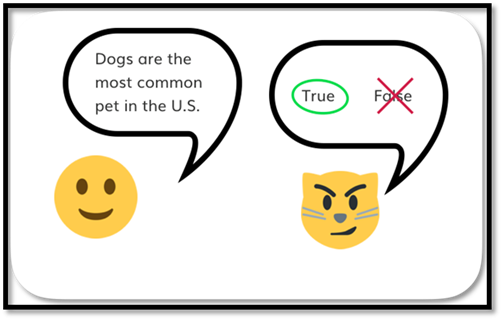
An opinion expresses
what someone thinks or feels. Readers might disagree with an opinion.
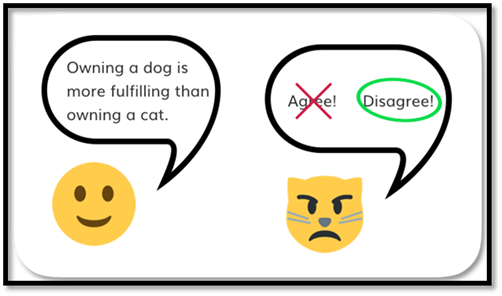
Strong
thesis statements share an opinion. This makes essays more interesting because
readers can decide whether they agree or disagree.
Let's Practice
Model of an Introduction
Read the
model of an introduction based on the title below.
Hook – Bridge – Thesis
|
“So Teens Can Learn, Let Them
Sleep!” |
|
Teenagers shuffle into their first
class of the day, yawning and rubbing their eyes. This scene is far too common in
American high schools, where school arrival times interfere with teenagers’
natural sleep cycles. Early school schedules not only result in sleepy
students; they hurt students’ health and academic performance. To allow young adults to get
the sleep they need, US high schools should push back arrival times until at
least 9:00 am. |
Let's Practice
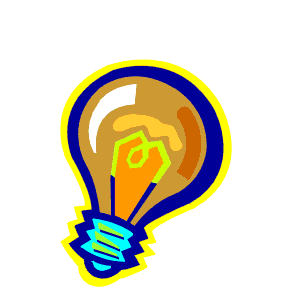
Your thesis is the most important
part of your essay.
Before you start writing, know what you will argue in your
essay.
"Is social media
more beneficial or risky for teenage students?"
Independent and Dependent
Clauses
The two
main types of clauses in English grammar which are fundamental to sentence
building are:
A clause is
a group of words with a subject and a verb.
It is not the same as a sentence, which consists of all
the clauses or phrases between two full stops.

If you look
at the above sentence, there are three sets of subject-verb and three clauses.
However,
the sentence has only two types of clauses: one dependent clause and
two independent clauses. So, what is the difference between dependent and independent
clauses?
Independent Clauses
There are
two key elements of an independent clause:
- It has a subject and verb
- It
expresses a complete
thought
'Complete
thought' means that the clause makes sense without adding anything.
If there is
only one of this type of clause, i.e., one S-V combination, it is called
a simple
sentence:
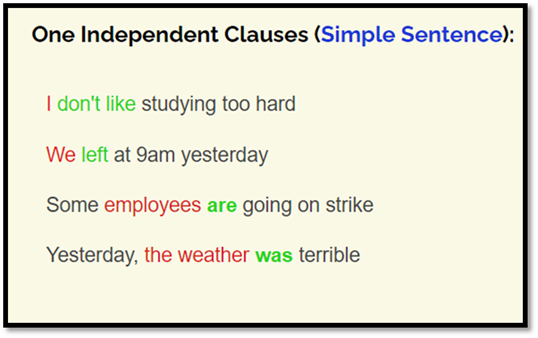
If we want
to add two or three independent clauses, we use a coordinating
conjunction (and, but, or, for, yet, so, nor).
If we do
this, these types of clauses are called compound
sentences:
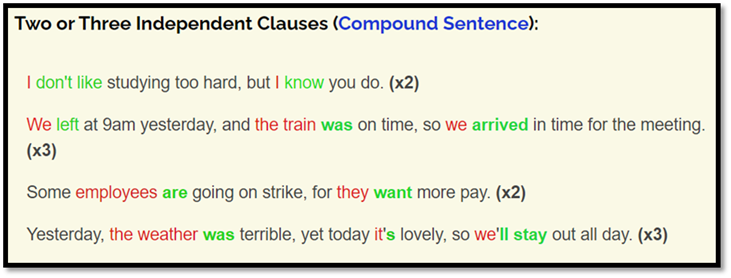
But the
important point is that all the clauses, if used alone, still express a
complete thought, as you can see if we take the three clauses from the second
sentence:
- We left at
9 am yesterday
- The
train was on time
- We arrived in
time for the meeting
Of course,
we have a different meaning with the coordinating conjunctions as these show
the relationships between the clauses, but they still make sense alone.
Dependent Clauses
There are
two key elements of a dependent clause:
- It has a subject and verb
- It
expresses an incomplete
thought
So, unlike
an independent clause, this type of clause will only make sense if it has a
subject and verb.
To make
sense, it must be joined with an independent clause. That is why dependent
clauses are also called subordinating
clauses - they
are subordinate to (under the control of) the main clause, as they
cannot exist without it.
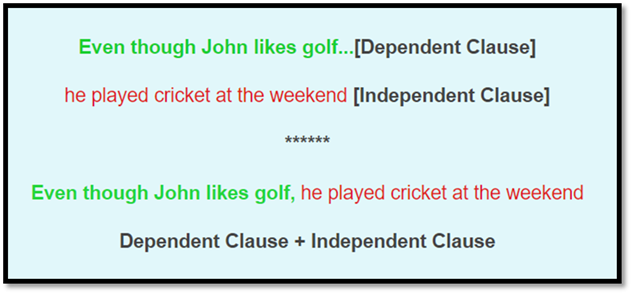
'Even though John likes golf' does not make sense, but it does once
we add the main clause.
Rather than
coordinating conjunctions, the relationship between these clauses is expressed
through subordinating
conjunctions, such as while, although, even though, as soon
as, since, despite, which, who, that, etc.
We get a complex
sentence when we join these two types of clauses. Here are some
examples of complex sentences with the dependent clause in green:
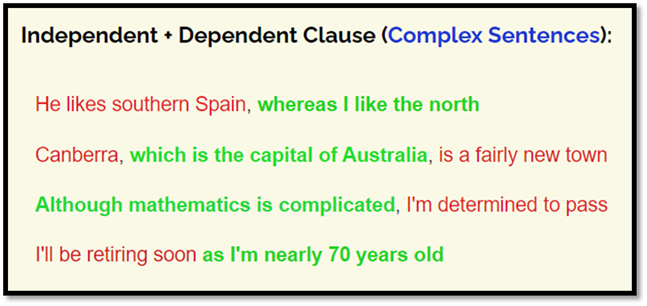
Let's Practice
Click here to
complete a Flocabulary Activity.
(username: masloski7511
password: lemon6753)
Vocabulary List
Synonyms are words that have similar or nearly
identical meanings in a language. They are important for several reasons:
1.
Vocabulary expansion: Learning synonyms helps you expand your
vocabulary, making you more confident and articulate in expressing yourself.
This skill is essential for reading comprehension, writing, and effective
communication.
2.
Writing variety: Synonyms provide alternatives for
words they commonly use, making your writing more engaging and diverse. This
can improve the quality of your essays.
3.
Understanding context: Knowing synonyms, you can better
understand the subtle differences in meaning and usage between similar words.
4.
Improved reading comprehension: Recognizing synonyms can help you better
understand texts by allowing you to decipher the meaning of unfamiliar words
based on the context and your knowledge of similar words.
5.
Language proficiency: As you learn more synonyms, you
become more proficient in the language, which can lead to better performance in
language arts and standardized tests.
6.
Critical thinking skills: Identifying synonyms and
understanding their usage requires critical thinking skills, such as analyzing
word choice and meaning, which can benefit you across various subjects.
Below is a "synonym" practice activity using your vocabulary
list.
Let's Practice
Argumentative Text
Rae Paoletta is a journalist in New York City who often writes about
science and young people. In this article, she explores how one teen has used
social media. As you
read, note how one teen uses social media to impact others.
Read the
article and write down as many notes as possible.
These notes
can be in the form of a quotation or paraphrase.
Click
Here for Note-Taking Template